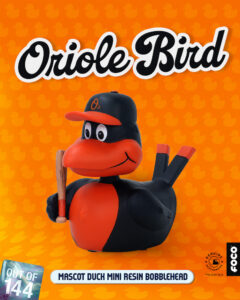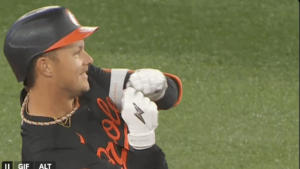Earlier this offseason the Orioles frustrated many fans when they traded closer Jim Johnson, who saved over 100 games for the team from 2012-13, to the Oakland Athletics for second baseman Jemile Weeks and an unknown player. The move was widely regarded as a salary dump because Johnson was expected to earn over $10 million in 2014.
Even Orioles fans who did not dislike the move at first are changing their tune now, as over a month later, the Orioles still have not spent the money elsewhere. They signed former Miami Marlins reliever Ryan Webb to a two-year deal worth $4.5 million, but he will likely slide into the seventh or eighth inning.
They then came to an agreement with former Athletics closer Grant Balfour not long after the Johnson trade, only to back out at the last minute, citing issues with the results of a physical. Balfour immediately fired back that he was completely healthy and that the Orioles just changed their minds. While many – here and elsewhere – chided the Birds at the time, in fairness to them, Balfour has still not been signed by another team, so the phantom issues may be more real than he wants to admit.
Still though, the Orioles are without their closer, and will likely look from within the ball club for a new closer with relief pitcher Tommy Hunter the most likely candidate, according to recent reports. That isn’t surprising as Hunter had a strong 2013 season pitching late in games out of the bullpen, but is it what is best for the team?
Spoiler alert: it is not.
There is a better way to handle ninth-inning duties in Baltimore in 2014, and it’s not unheard of to think that this proposal could even help the Orioles improve upon 2013 when Johnson blew nine saves giving him a middling save percentage of only 84.7%. By comparison, Johnson had 51 saves and only blew three saves in 2012 – a sterling 94%. ESPN’s David Schoenfield called Johnson the least valuable player of all of 2013 last year.
So what is it?
Don’t use a closer at all. Seriously – do not try to establish a closer early in the year or even at all. Instead, use a couple of your top relievers depending on the situation.
Hunter would be at the head of the committee most likely, as he did an incredible job in 2013 finishing with the best ERA and WHIP of his career at 2.81 and .985 respectively. He showed ability to pitch multiple innings at times too, making 68 appearances while logging 86 1/3 innings. The only problem was that he wasn’t able to get left-handed hitters out, and that would burn him over the course of the season in the ninth.
Lefties hit .294 against Hunter in 2013 which was more than twice as high as righties (.141). He also has been more susceptible to giving up the long ball against lefties than righties, as over 63% of the career homers against Hunter were hit by left handed batters.
Hunter is capable of getting out below average lefties but what do you do with a dominating right handed pitcher who can shut down right handed batters but runs into trouble when he faces a good left handed hitter? Rather than watch AL East left handed studs like David Ortiz and Jacoby Ellsbury lead the Red Sox and Yankees over the Orioles in the ninth inning, the answer is to bring in a left handed relief pitcher who can get out tough lefties.
Enter Brian Matusz.
Matusz’s ERA of 3.53 in 2013 doesn’t seem impressive, but like Hunter, his numbers have extreme splits. Matusz shut down lefties, as they hit only a paltry .168 against him, while righties were able to hit a scorching .302. If he can be brought in to face a tough left handed hitter in the ninth to relieve Hunter, or to start the inning if it is slated to feature primarily left handed hitters, the combination of Hunter and Matusz can perform well.
This goes against the concept of a closer needing confidence to perform, but a manager like Buck Showalter can make his players understand it is what would be best for the team. Naysayers may also feel it limits the effectiveness of the rest of the bullpen, but this bullpen is deeper than some realize. Darren O’Day, Troy Patton, and Ryan Webb among others should be able to control the seventh and eighth innings. The plan also becomes more difficult on days where the starter gets shelled in 3 1/3 innings or in long extra-inning games but one would think those games are usually not winnable anyway and those games will feature long relievers like T.J. McFarland more than anything else.
Regardless, the best course of action for success in the ninth in 2014 is to split the job primarily between Hunter and Matusz. It is not a stretch to think that each of them could register over 20 saves in 2014 and combine for a better overall percentage than Johnson did last year, at a fraction of the cost.









